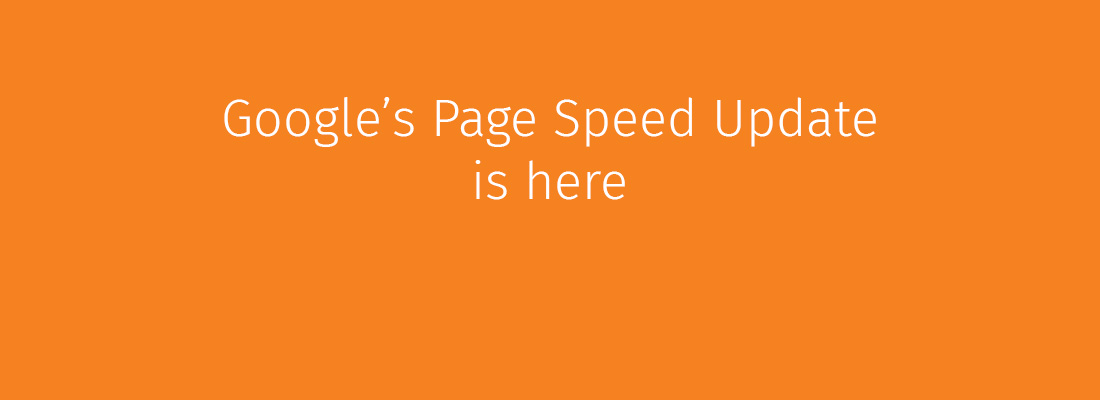Google's Page Speed ranking is here

Google have rolled out a new update to their algorithm that ranks fast pages better than slower pages for mobile search.
With mobile traffic accounting for 70% of online traffic, do you know whether your website is fast - and if not how to fix it?
Speed isn’t everything but it’s very important
This recent update by Google means that search results will prioritise websites that have fast mobile page speeds. Google understands that when searching online, users don’t just want the right answers - but they want them quickly.
By taking page speed into consideration, it ensures that users will see not just relevant results, but results that will be delivered quickly.
That isn’t to say that speed is the only factor affecting your ranking on Google. You still need to ensure your pages are secure, serve relevant quality content and are structured correctly. Slower results may still creep onto the Google results, but generally only if nothing faster can be found.
You can read Google’s webmaster blog article on it here
So when does this take affect?
This change rolled out today! And will gradually be rolled out across Google’s network within the next couple of days.
We don’t know for sure how quickly the results on Google will change (and start lowering the ranking of slow websites) however it’s definitely the time to check your website’s speed and get it looked at.
How can I find out my page speed?
Google have a fantastic tool we’ve been using for all our sites. It’s called PageSpeed Insights (or PSI) and can be found here.
Simply run your website URL through there and it’ll offer suggestions to improve the speed.
We also recommend SEOptimer which not only checks your page speed, but will check your SEO score and website security too.
Want some suggestions to fix common problems? Read on.
My images are too large
This one’s actually a really easy fix using PSI. If the images on your website are too large, and take a long time to download, Google offers optimised versions of these images to download when you run the page speed test.
These optimised images are lossless (though do check first) and shouldn’t loose any quality, whilst minimising their file size.
It’s always important to have high-quality images on your website, but make sure you strike a good balance between quality and speed when uploading images.
Generally it’s a good idea to try keep images around 100kb or lower if possible.
My scripts or CSS files aren’t ‘minified’
Minification is a term for shrinking code resources by removing all the unnecessary extra spaces.
Generally, developers keep their code nice and neat, with space between sections to make it easier for humans to read.
Computers don’t care about this however, and the spaces put into code actually takes up some extra bytes of data.
By minifying these resources, you gain a bit more speed as it’ll be quicker to download by your users.
My server is slow, not caching or doesn’t have gzip enabled
This one’s a bit more tricky, and requires some technical know-how to solve.
If you’re on shared hosting (generally the cheaper option) the only thing you can do is contact your web host and see if they can take a look at this for you. You may find that they want you to upgrade your hosting however (and you do get what you pay for).
If you have a dedicated server, or some higher-level hosting then your best bet would either be to look into instructions for your particular server. Google have some fantastic preset configurations available on GitHub which should make things a little easier.
What’s this AMP people keep banging on about?
AMP or Accelerated Mobile Pages is a technology by Google to create super-fast, pre-loaded websites that are optimised for a mobile and content-first experience.
These pages are generally so tiny, that when a Google search is performed, all of the results that have AMP pages available can be pre-loaded into a users’ browser. This means when a result is clicked on, the transition is instant.
They require a bit of work to set up, and generally involve creating a second-version of your webpages to be AMP optimised, with the ‘canonical’ or original version available separately.
Want to talk to us about anything in this post? Send an email to the team or give us a call
